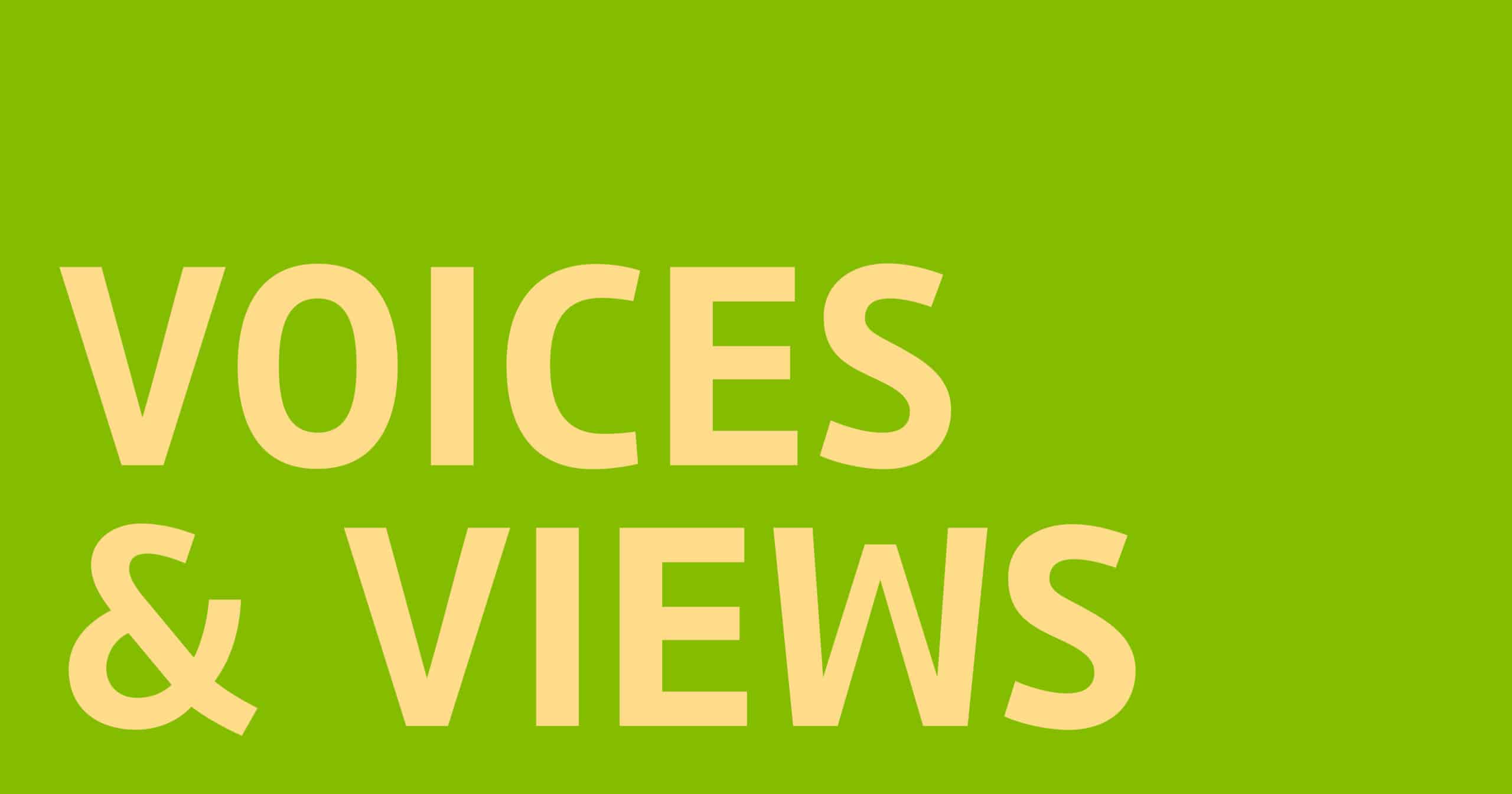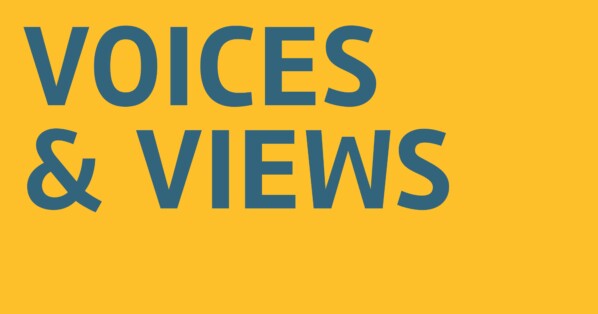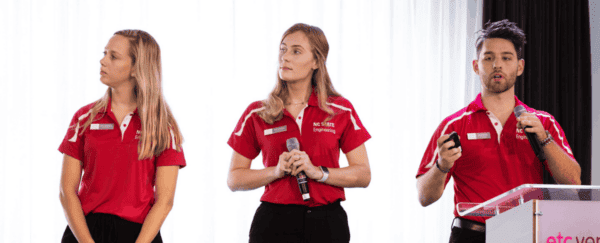In the famous words of Disney® animated character Kim Possible, “Call me, beep me, if you wanna reach me. When ya wanna page me, it’s okay!”
While pagers might no longer be the go-to option, there are more communication channels to pick from now than ever before. As a result, it’s becoming harder to choose the right one for the occasion, and to match a personal preference with that of a co-worker. To help guide us through the myriad options, we asked four SWE members — across four generations — to weigh in on navigating written, verbal, individual, and group communication methods.
Believe it or not, SWE Editorial Board Chair Mary C. Verstraete, Ph.D., F.SWE, our representative from the baby boomer generation, received her very first text message at a SWE conference! When it comes to this form of communication, she likes to text for efficiency purposes, but recognizes its drawbacks.
“In a very busy world, you can accomplish a lot in a very short time,” she said. “However, with any written form of communication, it is easy to say the wrong things and you cannot truly convey emotions. Most people would probably say I overuse emojis because I try to convey emotions this way.”
So much for generational assumptions and stereotypes.
With instant-messaging tools taking over many workplaces and replacing some of what used to be done by email, not everyone is initially eager to make the shift, including our Gen X contributor, FY21 SWE President Heather Doty. “I couldn’t figure out why you would do that rather than email. When it was introduced in my office, I was resistant to it. Then I started using it, but purely in a social sense.”
As with any communication style, personal strengths can heavily influence preference. Dr. Verstraete recognizes this when she adds, “I am better at the written word than I am at the spoken word. I feel that I can write out details in a better manner and can convey facts and figures better this way. Plus, you can review it before sending, avoiding saying things you later wish you hadn’t, or you can clarify details.”
Doty recalls a similar reliance on email when she first started working. “I would spend way too much time going back and forth rather than just picking up the phone. I was taught by a mentor that you always want a record of decisions, but this can be achieved with a follow-up email after the conversation.”
While written communication is more permanent and can be a good reference tool, there are some drawbacks. Our Gen Z participant, Emma Dong, initially preferred the passive nature of reading and sending emails when she first entered the workforce because it allowed her to ramp up at her own pace. As time passed, however, she recognized that “it is slower paced and has a greater chance of miscommunication. There’s a higher likelihood of something getting misinterpreted, so it can cause tangents or arguments.”
To balance the pros and cons of email, our millennial contributor, Alina Bartley, has learned to reserve email for specific purposes. “I use email as more of an update or summary tool, but not as a way of resolving complex issues.”
“I am better at the written word than I am at the spoken word. I feel that I can write out details in a better manner and can convey facts and figures better this way. Plus, you can review it before sending, avoiding saying things you later wish you hadn’t, or you can clarify details.”
– Mary C. Verstraete, Ph.D., F.SWE, SWE editorial board chair
The best of each
Verbal communication was highly preferred across generations. For Dong, “In-person discussions are most useful for getting context and driving changes.” In addition, it helps reduce misinformation. Speakers can check in with their audience to ensure they understand the content, while a listener can repeat back how they interpreted the presentation or clarify points brought up. Both Dr. Verstraete and Doty shared how face-to-face conversations make it easier to read nonverbal cues, such as body language, reactions, and facial expressions. You can also better interpret tone of voice, which brings authenticity and personality into conversations.
Interacting verbally is also a way of forging relationships. Bartley explained how she “schedules one-on-one calls even if something could be resolved over an instant message because it allows us to build more trust.” The time at the start of meetings when people are getting settled also lets you “informally check in on how someone is doing,” which Doty said can be easy to skip in other forms of communication.
Verbal communication is not without its challenges, particularly in group settings. Dong shared how there’s a higher risk of being complacent if you don’t have an action item or you feel intimidated in a larger group setting. Attendees might also fixate on a particular meeting topic and risk derailing the conversation. For online conference calls, Dr. Verstraete brought up additional struggles where “you don’t really know who is speaking, people talk over each other; everyone is typically multitasking or on mute.”
To combat these challenges, Doty shared tactics to stay engaged and “occupy your hands, but not too much of your brain,” which can be done by taking notes, doodling, or using a fidget toy. Some teams encourage a “no-screens” policy, where attendees are encouraged to leave laptops at their desks, minimize other apps on their screens, or put their phones on silent to be fully present. Sending an agenda and pre-read materials can give your audience time to absorb the material and formulate questions. You can also consider connecting one-on-one before or after the larger group meeting to exchange feedback in a more comfortable setting.
Throughout our conversations, it was clear that written and verbal communication don’t exist in silos. Some of the best methods involve a combination of both. Most of our contributors learn best through interactive presentations with activities for reinforcement, or by “actually doing the task with verbal guidance from someone with more expertise.” Even working sessions can benefit from a mix of written and verbal.
It’s important to know your communication strengths and weaknesses, and just as important to learn the preferences of the people you work with. Regardless of which generation you and your co-workers associate with, everyone is unique in some way. You can maximize your ability to connect across all generations by remaining open, flexible, and knowledgeable about the communication tools around you!
Authors
-
Sarvenaz Myslicki has been an active SWE member for more than 10 years. She has held leadership positions at the section and Society levels and currently serves as chair-elect of the editorial board. A vice president of engineering at American Express, she holds a B.S. and M.S. in computer science, as well as an executive MBA.
-
Nicole Woon is a SharePoint program manager at Microsoft and graduated from the University of Pennsylvania with an M.S.E. (mechanical engineering) and two B.S.E.s (bioengineering, entrepreneurial management). An active SWE life member, she currently serves on the editorial board.







